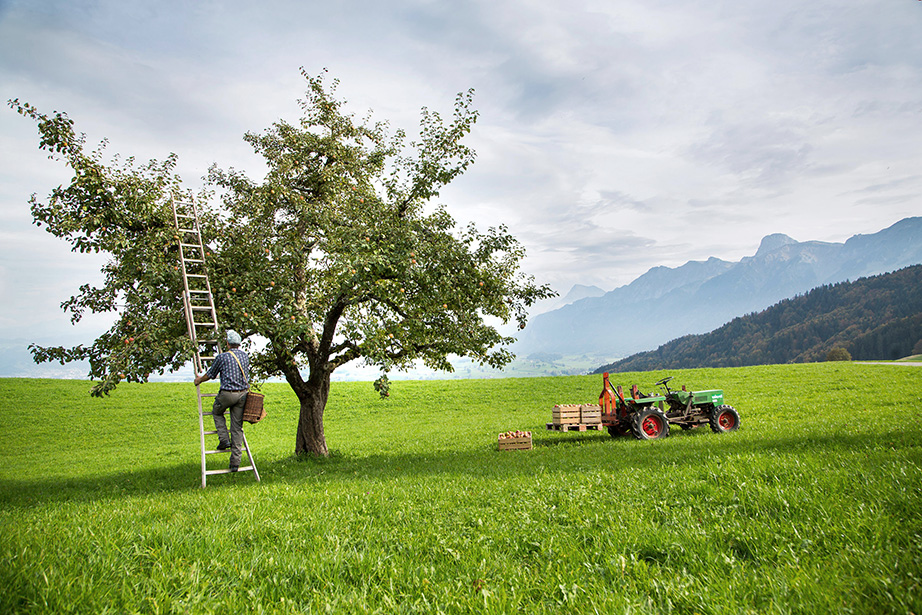Apple Tree

A year in the life of an Apple Tree
An apple tree comes to life in the spring and is covered with buds, leaves and blossom. The blossom is pollinated by all kinds of bees. If the tree is young, shoots will also emerge. They will become new branches during the summer months. The fruit on the apple tree ripens in summer and the shoots will grow into branches. The chlorophyll in the tree’s leaves absorbs sunlight for photosynthesis, a process which turns carbon dioxide (CO2) and water into glucose. Oxygen is also created as a by-product that’s released into the atmosphere.
Farmers pick the ripe apples from the tree in autumn. As the days get shorter and the nights turn colder, the apple tree slows down its metabolism. The leaves change colour and eventually fall off the branches. The tree is dormant in winter, so it absorbs minimal nutrients and grows at a slower pace. Farmers take this opportunity to give the tree its annual prune.
Advantages of standard trees
Swiss standard trees enhance the landscape, giving it structure and keeping it diverse. They have greater ecological value than half-standard trees because they provide a habitat to more species of animals and they store more CO2 for longer. They also have larger roots, meaning they can absorb more water and are less affected by the increasingly dry weather during the summer. What’s more, the apples on standard trees are more nutritious because there are more leaves per apple and the larger roots can absorb more nutrients.
The life of a standard tree
We can roughly divide the life of a standard tree into four stages:
• Sapling: Shoot and branch growth is strong in a steep upward direction. The tree is not able to bear fruit yet.
• Mature tree: Shoot growth becomes weaker and branches are more horizontal. The tree produces a large amount of fruit.
• Ancient tree: Young shoots don’t tend to form anymore. The fruit decreases in size and the quality declines.
• Snag: Dead wood forms and the tree dies.
Tree maintenance by farmers
Apple trees need to be maintained with care if they are going to bear a bumper yield of delicious fruit. During winter, farmers prune the trees. They keep mice at bay in spring to stop them eating the roots of young trees. In fact, they always work hard to prevent pest infestations and diseases. RAMSEIER funds training for fruit farmers in the east of Switzerland, provides a professional tree pruning service at cost price and supports the Bio Suisse project promoting the production of organic apples for juice.
Growing and grafting apple trees
If you plant an apple seed, it won’t usually grow to be identical to the original tree the seed came from. Anyone looking to grow a specific variety of apple tree should graft a bud from a shoot of the chosen variety onto the rootstock growing from the seed. The fruit-bearing branches will then grow from there. Tree nurseries grow and graft apple trees, which they then sell on to farmers as saplings while they’re still young.